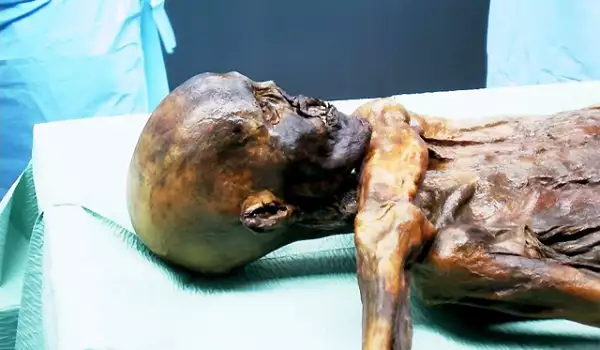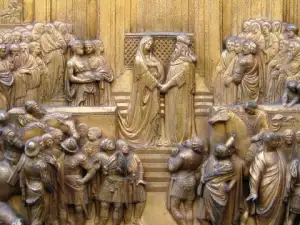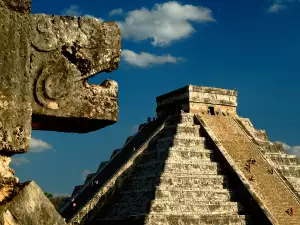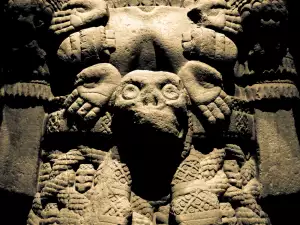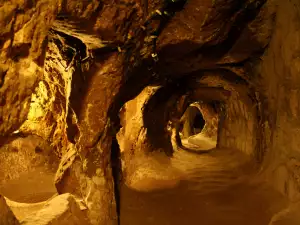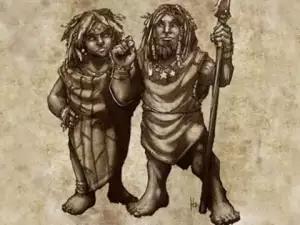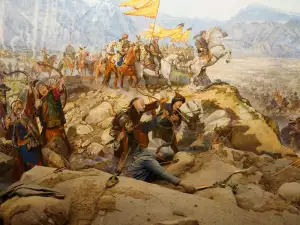Otzi The Iceman is the name scientists give to an accidentally discovered mummified corpse of a man who lived 5, 300 years ago.
Nestled in a glacier at 3, 200 meters above sea level in the Yotztal Alpine region, located on the border between Italy and Austria, Otzi spent millennia to tell how our distant ancestors lived in 3300 BC.
At first, the tourists who came across it, as well as the police units that freed Otzi from the icy embrace of the mountain, decided that it was the corpse of a dead climber, but the analysis of the corpse showed a startling result - the mummy was dated to 3365 to 3318 BC, making it the oldest intact body of a member of the human family. Automatically, Otzi also becomes the most studied mummy in the world.
The methods used to study him became more and more sophisticated and managed to restore all the important moments of the origin, life and death of the oldest human being that has remained completely preserved to this day.
What does the Otzi mummy tell us about himself?
Initial reports indicate that Otzi was about 165 cm tall and weighed 61 kg. He was about 45 years old at the time of his death. When discovered, the mummy weighed 13, 370, and the ice helped to preserve it and the decomposition that occurred was quite insignificant. This fact makes it possible to understand many details about ancient man.
How did Otzi die
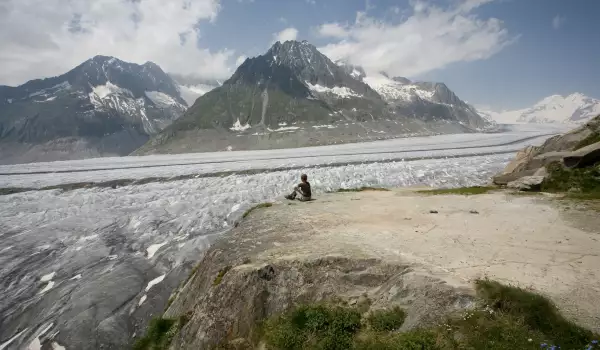
The most interesting question. The first assumption was that a strong storm overtook him in the mountains and he fell victim to the white death. Examination of his stomach contents, however, quickly ruled out this hypothesis.
It was late spring or early summer, just when the hop hornbeam was blooming with bright yellow flowers in the Alps. The yellow pollen stuck to Otzi's food and ended up in his stomach, where it was discovered. Traces of ancient dust are microscopic evidence of the season in which it was overtaken by death.
On Otzi's body, scientists also found traces of the drama that took place 5 thousand years ago. An arrowhead is found in his left shoulder. The wound would have been fatal even with modern medical advances.
Other abrasions and lacerations were found on his arms, wrists and chest, as well as trauma from a possible blow to the head. Otzi died of a hemorrhage, the arrow breaking his shoulder blade, damaging nerves and blood vessels. All this indicates that he probably died in battle.
Who was Otzi, how did he live and where did he come from
What was Otzi like before he met his death in the Alps? The high content of copper and arsenic in Otzi's hair and in his ax suggests that perhaps his occupation was copper smelting. The condition of the bones suggests that he lived an active life, often making mountain treks. Perhaps he was a shepherd or a merchant carrying his goods.
As he was of a serious age for the time in which he lived, a full analysis of his health was made. The research gave interesting results - Otzi also suffered from diseases well known even today. He had bone damage and probably underwent treatment similar to Chinese acupuncture, evidenced by body tattoos placed at the impacted sites.
The strain of Helicobacter pylori bacteria found in his body is still found today in northern India.
Otzi was the first member of the human population to be diagnosed with Lyme disease.
The wear of the Iceman's tooth enamel indicates that his food contained a lot of carbohydrates.
The analysis of the stomach contents also provides an answer to the question of what was the last food he consumed before his death. Otzi had recently eaten dried goat meat as well as venison. They were accompanied by roots and fruit. There were also traces of wheat, probably in the form of bread. It is assumed that they were part of the winter harvest, because the wheat was harvested early in the fall.
Also of interest is the origin of Otzi The Iceman. From the tooth enamel, it was established that he spent his childhood in a small village near Bolzano, but later moved 50 kilometers to the north.
His ancestors are undoubtedly Indo-European on his mother's side, as is Otzi himself. His mother, according to genetic research, was a native of the Tyrolean Alps and lived in a small closed population, of which there are no living descendants today.
Otzi's paternal ancestors were found to be farmers who migrated from the Middle East to Europe 3, 000 years earlier. It is likely that the migration of people during the Bronze Age became the reason for the closed small human population from which Otzi and his ancestors originated.
